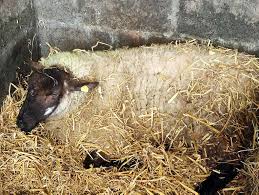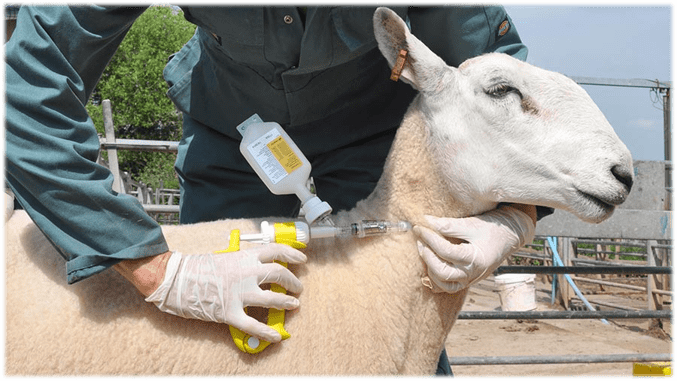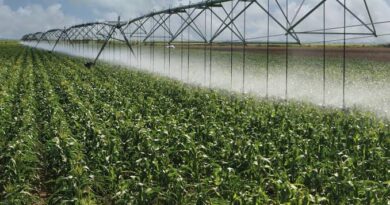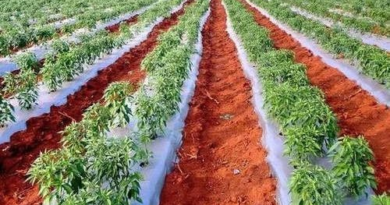Pasteurellosis: Description, Damages Caused, Control and Preventive Measures
Pasteurellosis, also known scientifically as Pasteurella infection, is a type of bacterial illness that affects various animals, including humans. The causative agent is Pasteurella, a genus of bacteria comprising several species, with Pasteurella multocida being the most common culprit in infections. These bacteria are widespread in the environment and can inhabit the respiratory and digestive tracts of animals.
In animals, Pasteurellosis manifests in different forms depending on the species affected. Domestic animals like cattle, swine, and poultry can experience respiratory and systemic infections. In humans, Pasteurella infections often result from animal bites or scratches, particularly from cats and dogs. These bacteria can also enter the body through open wounds or cuts.
The symptoms of Pasteurellosis can vary, ranging from localized swelling and redness at the site of infection to more severe systemic symptoms like fever and fatigue. In animals, respiratory distress and nasal discharge may be observed. Prompt diagnosis and treatment are crucial to prevent the spread of infection and potential complications.
The transmission of Pasteurella bacteria occurs through direct contact with infected animals, their saliva, or contaminated environments. In humans, bites or scratches from pets are common sources of infection. Additionally, handling infected animals, especially without proper hygiene practices, can contribute to the transmission of Pasteurella.
Treatment for Pasteurellosis typically involves antibiotics, and the choice of antibiotic may vary based on the severity of the infection and the specific strain of Pasteurella involved. It’s essential for healthcare professionals to consider factors such as the patient’s overall health, any underlying medical conditions, and the potential for antibiotic resistance.
Preventing Pasteurellosis involves practicing good hygiene, especially when handling animals. Proper wound care is crucial if one sustains a bite or scratch, and seeking medical attention promptly can help prevent the development of severe infections. Vaccination of animals in agricultural settings can also contribute to the control of Pasteurella infections.
However, Pasteurellosis, caused by Pasteurella bacteria, poses a threat to both animals and humans. Understanding the modes of transmission, recognizing symptoms, and implementing preventive measures are essential in managing and mitigating the impact of Pasteurellosis. Early diagnosis and appropriate treatment play key roles in ensuring a positive outcome for those affected by this bacterial infection.
Read Also: Rabbit Reproductive System (Male and Female)
Animals Affected by Pasteurellosis (Pasteurella)

Pasteurellosis can affect a wide range of animals, causing various health issues. Commonly affected species include domesticated animals such as cattle, swine, and poultry. In these animals, Pasteurellosis often presents as respiratory and systemic infections, impacting overall health and productivity.
In cattle, Pasteurella multocida, the primary causative agent of Pasteurellosis, can lead to bovine respiratory disease complex (BRDC). This complex involves a combination of bacterial and viral agents, with Pasteurella contributing to pneumonia and other respiratory issues. BRDC is a significant concern in the livestock industry, affecting cattle health and productivity.
Swine can also be susceptible to Pasteurellosis, and the infection may result in respiratory problems and systemic illness. In the case of poultry, Pasteurella infections can lead to fowl cholera, causing various symptoms such as swollen wattles, respiratory distress, and a drop in egg production.
Aside from domesticated animals, wild animals can also be carriers of Pasteurella bacteria. The infection may manifest differently in various species, but it commonly affects the respiratory and digestive systems. Additionally, pets like cats and dogs can carry Pasteurella in their mouths, making bites or scratches potential sources of infection for humans.
Understanding the broad range of animals susceptible to Pasteurellosis is crucial for implementing effective preventive measures in both agricultural and domestic settings. This knowledge aids in the development of vaccination strategies, proper hygiene practices, and prompt veterinary care to manage and control the spread of Pasteurella infections among diverse animal populations.
Damages Caused by Pasteurellosis

Pasteurellosis can inflict significant damage on both animals and humans, with the severity of the impact depending on factors such as the species affected, the specific strain of Pasteurella involved, and the timeliness of intervention.
Animals:
1. Cattle: Infections in cattle can lead to bovine respiratory disease complex (BRDC), resulting in pneumonia and other respiratory issues. This not only compromises the welfare of individual animals but also poses economic concerns for the livestock industry due to decreased productivity.
2. Swine: Pasteurella infections in swine contribute to respiratory problems and systemic illnesses, affecting growth rates and overall pig health. This can result in economic losses for swine producers.
3. Poultry: Fowl cholera, caused by Pasteurella in poultry, can lead to decreased egg production, respiratory distress, and mortality. This has implications for both egg and meat production within the poultry industry.
4. Wildlife: Wild animals can serve as reservoirs for Pasteurella bacteria, contributing to the spread of the infection. In susceptible species, Pasteurellosis may lead to population declines and disruptions in ecosystems.
Human Health:
Pasteurella infections in humans are often associated with animal bites or scratches, particularly from cats and dogs. These infections can cause localized skin and soft tissue infections, with the potential for more severe complications such as cellulitis or, in rare cases, systemic spread. Individuals with weakened immune systems, the elderly, or those with underlying health conditions may be more susceptible to severe outcomes.
Read Also: Selection for Rabbit Breeding Process and Rabbit Mating
Control and Preventive Measures

Control and preventive measures for Pasteurellosis are crucial to minimize the impact of the infection on both animal and human health. These measures aim to reduce transmission, manage outbreaks, and protect vulnerable populations. Here are key strategies:
1. Vaccination: Implementing vaccination programs for susceptible animals, such as cattle, swine, and poultry, helps build immunity against Pasteurella bacteria. This proactive approach is instrumental in preventing infections and reducing the severity of outbreaks.
2. Biosecurity Practices: Establishing and maintaining strict biosecurity measures in agricultural settings is vital. This includes controlling access to farms, monitoring and quarantining new animals, and implementing hygiene protocols to prevent the introduction and spread of Pasteurella.
3. Animal Husbandry Practices: Good animal husbandry practices, including proper nutrition, ventilation, and housing, contribute to overall animal health and reduce the risk of respiratory infections. Stress management is particularly important, as stressed animals are more susceptible to Pasteurellosis.
4. Prompt Veterinary Care: Early detection and prompt veterinary intervention are essential in managing Pasteurellosis outbreaks. Timely administration of appropriate antibiotics and supportive care can improve treatment outcomes and prevent the further spread of infection.
5. Wound Care and Hygiene in Humans: Individuals who work with animals, especially pets, should practice proper wound care if bitten or scratched. Thoroughly cleaning and disinfecting wounds can reduce the risk of Pasteurella infections in humans.
6. Public Awareness: Educating the public, including farmers, veterinarians, and pet owners, about the risks of Pasteurellosis and the importance of preventive measures is crucial. Increased awareness can lead to improved hygiene practices and responsible pet ownership.
7. Research and Surveillance: Continuous research on Pasteurella strains, their prevalence, and antimicrobial resistance patterns helps inform control strategies. Surveillance systems can monitor the occurrence of Pasteurellosis and facilitate early intervention.
8. Quarantine Measures: Isolating and quarantining infected animals help prevent the spread of Pasteurella within and between populations. This is a critical step in controlling outbreaks and protecting healthy individuals.
9. Antibiotic Stewardship: Implementing responsible use of antibiotics in both veterinary and human medicine is essential to prevent the development of antibiotic resistance. Proper dosage and duration of antibiotic treatment should be followed.
10. Wildlife Management: Managing wildlife populations that serve as reservoirs for Pasteurella bacteria can help control the spread of the infection. This may involve habitat management or targeted vaccination in certain cases.
By integrating these control and preventive measures, it is possible to mitigate the impact of Pasteurellosis, safeguard animal and human health, and promote sustainable practices in agriculture and animal care.
Frequently Asked Questions (FAQs) About Pasteurellosis (Pasteurella)
1. Q: What is Pasteurellosis?
A: Pasteurellosis, scientifically known as Pasteurella infection, is a bacterial illness affecting various animals, including humans. It is caused by bacteria from the Pasteurella genus, with Pasteurella multocida being a common culprit.
2. Q: How is Pasteurellosis transmitted?
A: Pasteurellosis can be transmitted through direct contact with infected animals, their saliva, or contaminated environments. In humans, bites or scratches from pets, particularly cats and dogs, are common sources of infection.
3. Q: What animals are affected by Pasteurellosis?
A: Domestic animals such as cattle, swine, and poultry are commonly affected. Wild animals can also carry Pasteurella bacteria, contributing to the spread of the infection. Pets like cats and dogs can be carriers, posing a risk to humans.
4. Q: What are the symptoms of Pasteurellosis in animals?
A: Symptoms vary but may include respiratory distress, nasal discharge, and systemic illness. In cattle, it can lead to bovine respiratory disease complex (BRDC), while in poultry, it may result in fowl cholera.
5. Q: How is Pasteurellosis diagnosed in animals?
A: Veterinary diagnosis involves clinical signs, bacterial culture, and, in some cases, molecular techniques. Early detection is crucial for effective treatment and prevention of further spread.
6. Q: How is Pasteurellosis treated in animals?
A: Treatment typically involves antibiotics, and the choice depends on the severity of the infection and the specific strain of Pasteurella. Prompt veterinary care is essential for successful treatment outcomes.
7. Q: Can humans get Pasteurellosis?
A: Yes, humans can contract Pasteurellosis, often through bites or scratches from infected animals. In humans, it may cause localized skin and soft tissue infections, and, in rare cases, more severe complications.
8. Q: How can Pasteurellosis in humans be prevented?
A: Preventive measures include practicing good hygiene when handling animals, promptly cleaning and disinfecting wounds, and seeking medical attention if bitten or scratched. Antibiotic prophylaxis may be recommended in certain cases.
9. Q: Is there a vaccine for Pasteurellosis in animals?
A: Yes, vaccination programs for susceptible animals, such as cattle, swine, and poultry, are effective in preventing Pasteurella infections and reducing the severity of outbreaks.
10. Q: What is the economic impact of Pasteurellosis?
A: The economic impact includes treatment costs, reduced productivity in livestock, and potential trade restrictions due to disease outbreaks. Implementing control measures and biosecurity practices can help mitigate these economic losses.
Read Also: The Impact of Waste to Art Business









